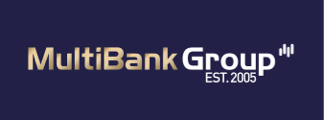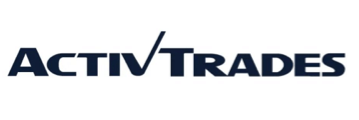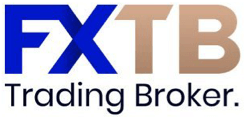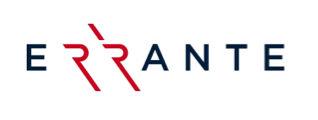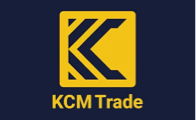Capital.com is an internationally recognized CFD broker founded in 2016 and headquartered in London. The company has grown rapidly, establishing a strong presence across Europe, Australia, and emerging Asian markets. Its model revolves around transparency, education, and technology, making it an attractive choice for traders seeking a regulated, data-driven environment. By offering a proprietary trading platform enhanced with AI-powered analytics and behavioral insights, Capital.com caters to both beginners and experienced traders who value clarity and efficiency. Although not authorized by the Monetary Authority of Singapore (MAS) and therefore not available to residents in Singapore, it remains accessible to traders throughout the broader Asia-Pacific region via its CySEC, ASIC, and FSA-regulated entities.

Between 60 to 80% of retail CFD accounts lose money.
| Regulators | FCA ASIC SCA SCB CySec |
|---|---|
| Minimum Deposit | $20 |
| Leverage | Between 1:30 and 1:500 | Payment Methods | Visa Mastercard Skrill Neteller Apple Pay Paypal Bank Transfer iDeal Sofort |
Capital.com is a London-based broker established in 2016 that has gained strong international traction due to its balance between technological innovation, regulatory coverage, and educational focus. The platform is known for making trading more approachable to retail traders, offering a clean and intuitive user experience while maintaining compliance across several global jurisdictions. For traders in Asia, this combination of accessibility and robust structure provides an appealing gateway into the world of leveraged CFDs without the typical complexities found in older brokerage ecosystems.
Unlike traditional brokers that rely solely on platform licensing or legacy trading systems, Capital.com has built its infrastructure around a proprietary web and mobile interface, complemented by TradingView and MetaTrader integrations. This design choice reflects a clear priority: usability without sacrificing analytical depth. Its growth to over seven million users worldwide demonstrates its ability to bridge education and execution in a single ecosystem. This makes it particularly relevant for developing markets such as Southeast Asia, where fintech adoption is high and traders seek intuitive, low-friction experiences.
Capital.com’s philosophy revolves around democratizing trading education. Its learning hub, market explainers, and sentiment tools align well with Asian trading communities that value structured guidance over aggressive marketing. The broker’s integration with AI-based risk management also appeals to those who want transparency about position sizing and exposure. These elements combine into a cohesive proposition: a broker positioned for traders seeking both simplicity and compliance.
However, Capital.com’s accessibility comes with one caveat: its global availability varies depending on local regulations. In Singapore, for instance, the company’s website explicitly notes that Capital.com is not licensed by the Monetary Authority of Singapore (MAS) and therefore does not solicit or provide financial services locally. While this limits direct account openings under MAS supervision, Asian traders outside that jurisdiction—such as those in Malaysia, Thailand, and the Philippines—can still access its services through other regulated entities. This layered compliance structure reflects both caution and maturity in cross-border operations.
Regulation
Capital.com operates under a multi-jurisdictional regulatory umbrella designed to provide transparency, segregation of funds, and investor protection across continents. This framework ensures that its users—whether in Europe, Australia, or Asia—benefit from established legal and operational oversight, a crucial factor for CFD trading reliability.
- United Kingdom: Regulated by the Financial Conduct Authority (FCA), ensuring client fund segregation and compliance with MiFID II standards.
- Cyprus: Licensed by the Cyprus Securities and Exchange Commission (CySEC), allowing service provision across the European Economic Area.
- Australia: Supervised by the Australian Securities and Investments Commission (ASIC) under strict transparency and risk disclosure guidelines.
- Seychelles: Authorized by the Financial Services Authority (FSA) to serve international clients under an offshore regulatory framework.
This multi-layered oversight allows Capital.com to maintain a consistent operational standard across its entities. Each jurisdiction provides different degrees of investor protection, which collectively enhance the broker’s trust profile. FCA and ASIC oversight are generally seen as gold standards, while CySEC adds passporting rights within the EU. The FSA Seychelles license, although less stringent, gives the firm flexibility to service clients from regions where the other entities are not authorized to operate directly.
For Asian traders, this structure translates into a diversified safety net. Those residing in countries such as Vietnam, Indonesia, or the Philippines typically onboard through the Seychelles or Cyprus entity, which still operates under recognized compliance procedures. The separation of client funds from operational capital remains a constant across all branches, ensuring that deposits are safeguarded even in cases of corporate distress.
It’s also worth noting that Capital.com clearly outlines its legal limitations in specific jurisdictions. The broker does not hold authorization from the Monetary Authority of Singapore (MAS) and therefore does not actively promote or conduct business within Singapore. Nevertheless, the firm’s decision to maintain this transparency indicates a commitment to regulatory integrity—a quality often missing in offshore-first brokers. In essence, Capital.com balances global reach with compliance prudence, an approach that Asian traders can interpret as a long-term reliability indicator.
In conclusion, Capital.com’s regulatory profile is one of its strongest assets. With licenses from top-tier authorities and a transparent jurisdictional map, it manages to provide both safety and flexibility to clients across continents. Its approach reflects a broker aware of the modern compliance landscape—adapting to each market’s legal boundaries while maintaining uniform protection principles.
Opening an Account – Our Experience
Opening an account with Capital.com is designed to be fast, intuitive, and entirely digital. The process begins directly from the broker’s website or mobile app, where prospective clients are prompted to create an account using an email address or existing Google or Apple credentials. Once basic information is entered, the platform guides users through a structured verification process that includes identity confirmation (government-issued ID) and proof of residence, in full compliance with KYC and AML standards. For most Asian traders, the entire verification process typically completes within a few business hours, reflecting Capital.com’s commitment to efficiency and user accessibility.
Once verified, traders gain immediate access to both a demo account and a live trading environment. The demo account mirrors real-market conditions, allowing users to explore spreads, platform functionality, and order execution before funding. This is particularly valuable for beginners or traders in developing Asian markets, where exposure to regulated brokers is still growing. Deposits can be made through a wide variety of funding options, including bank transfers, credit/debit cards, and regional e-wallets such as Skrill or Neteller. Capital.com does not charge deposit or withdrawal fees, making the funding process transparent and predictable. Withdrawal requests are processed within 24 to 48 hours, and the company maintains a clear separation of client and operational funds, ensuring safety throughout the transaction chain.
The onboarding experience also includes a short suitability questionnaire designed to assess trading knowledge and risk tolerance. This is not a barrier to entry, but rather a regulatory safeguard that helps classify traders correctly under retail or professional categories. Retail traders benefit from capped leverage and negative balance protection, while professional traders—after approval—receive higher leverage thresholds and custom margin settings. Such segmentation ensures compliance while aligning risk exposure with the trader’s experience level.
What stands out most during the account-opening process is Capital.com’s educational overlay. New users are guided through optional tutorials and in-platform tooltips that explain margin usage, order types, and basic risk management principles. This is particularly useful for Asian traders entering CFDs for the first time, as it bridges the gap between learning and execution. The absence of hidden requirements or high minimum deposits contributes to a sense of trust and accessibility. Overall, the account opening process with Capital.com is efficient, transparent, and designed to empower traders from diverse backgrounds, making it especially suitable for Asia’s rapidly growing digital investor community.
Account Types
Unlike many brokers that segment their clients into multiple account tiers, Capital.com follows a streamlined structure. Officially, it offers a single core CFD account for retail traders, complemented by specialized variants adapted to different regulatory or ethical frameworks. This minimalist approach eliminates confusion and maintains consistency in pricing, platform access, and available instruments across all clients. The absence of multiple account levels means that every trader—regardless of deposit size—has access to the same execution conditions and analytical tools, creating a level playing field that aligns with the company’s transparency-focused philosophy.
Retail clients trade under the standard CFD framework, with leverage capped according to regional regulation—typically up to 1:30 under FCA or CySEC rules, and higher under offshore entities. They benefit from negative balance protection, margin close-out safeguards, and full access to the broker’s educational materials. For professional clients, Capital.com offers an upgrade option subject to eligibility criteria, including portfolio size, trading volume, and experience verification. Professionals may access higher leverage (up to 1:500 depending on jurisdiction) but waive certain protections reserved for retail users. This separation is clear and compliant, preventing any misrepresentation of risk levels.
Additionally, the broker provides a Swap-Free Account option, designed for traders who follow Islamic finance principles. This structure removes overnight interest charges while preserving full market access, ensuring inclusivity for clients from Muslim-majority countries such as Malaysia and Indonesia. Capital.com’s swap-free structure does not compromise execution quality or market coverage, maintaining identical trading conditions except for the absence of swaps.
From an operational standpoint, Capital.com’s simplicity works to its advantage. By avoiding a cluttered account hierarchy—such as Silver, Gold, or Platinum tiers commonly used elsewhere—the broker maintains uniformity in execution and education. Every client benefits from the same cost model, AI-based analytics, and platform performance. For Asian traders, this consistency is particularly appealing: it allows them to focus on skill development and strategy refinement rather than worrying about account upgrades or hidden benefits reserved for higher deposits. The result is a clean, reliable framework that supports long-term trader growth without unnecessary complexity.
Platforms
Capital.com offers a versatile suite of trading platforms designed to balance usability and analytical power. Its proprietary web and mobile platform remains the centerpiece, offering an AI-enhanced trading experience that identifies behavioral biases and risk exposure patterns. This is complemented by integrations with MetaTrader 4 and TradingView, two platforms highly popular among Asian retail traders.
The native platform’s design prioritizes clarity. Charts are rendered in real-time with advanced overlays, multi-timeframe analysis, and synchronized watchlists across devices. Educational prompts appear contextually, guiding users through order execution, margin usage, and volatility awareness. For those accustomed to cluttered interfaces, Capital.com’s layout provides a refreshing alternative.
MetaTrader integration broadens the broker’s appeal among algorithmic traders. It enables automated strategies, custom indicators, and copy-trading capabilities within a globally recognized ecosystem. Meanwhile, TradingView connectivity appeals to discretionary traders who prefer visual analysis and social chart sharing. The trio of platforms ensures that users can adapt according to their strategy without being locked into a single ecosystem.
For mobile-first Asian traders—particularly in markets like Indonesia, Vietnam, and India—the Capital.com app delivers one of the smoothest cross-device transitions in the industry. Push notifications for margin calls, order fills, and volatility alerts enhance situational awareness, crucial in high-speed FX or crypto markets. Collectively, these platform options position Capital.com as an adaptable broker capable of scaling with the user’s experience curve.
Assets
Trading with Capital.com offers exposure to a wide spectrum of global and regional markets, unified under a single trading framework. Rather than emphasizing the sheer number of available products, the broker focuses on accessibility, liquidity quality, and market diversity. This means traders can build positions across currencies, commodities, equities, and indices while maintaining consistent execution conditions. The structure encourages participants to think in terms of correlations, volatility cycles, and global risk sentiment rather than isolated instruments.
Available Assets
Below you can see which assets are available for trading with Capital.com:
| Asset | Availability |
|---|---|
| Currencies | 140 |
| Real Stocks | ✗ |
| Stock CFDs | ✓ |
| Commodities | ✓ |
| Indices | ✓ |
| Real ETFs | ✗ |
| ETFs CFDs | ✓ |
| Futures | ✗ |
| Options | ✗ |
| Bonds | ✗ |
| Cryptocurrency CFDs | ✓ |
| Real Cryptocurrencies | ✗ |
*Availability of certain assets may vary based on account type, platform, or region.
For Asian traders, this diversity provides a valuable educational platform. It allows the development of a cross-market understanding of how currencies interact with indices, or how commodities move in relation to regional economic data. The Capital.com environment supports multi-asset learning through unified margin management—an approach that helps traders recognize the interdependence between asset classes. Over time, this reinforces strategic thinking: identifying how capital flows shift between regions or sectors rather than focusing on single-pair speculation.
Another defining aspect of Capital.com’s asset structure is the emphasis on liquidity and data transparency. Every market quoted through its platform is sourced from reputable providers, with price aggregation designed to reflect real-world market depth. This ensures that whether one trades a major instrument during the Tokyo session or a correlated index during London hours, execution quality remains stable. This consistency benefits Asian traders who often operate across overlapping time zones, as it reduces the risk of slippage or pricing anomalies during transitional liquidity periods.
Educational integration further enhances the experience. Each asset class is accompanied by analytical content, risk notes, and volatility indicators accessible directly from the trading interface. Instead of presenting assets as mere speculative opportunities, Capital.com frames them as learning gateways for building macro awareness and portfolio diversification. For developing markets in Asia—where new traders frequently begin with a single focus such as forex—this inclusive exposure fosters more balanced decision-making and long-term skill development. In essence, Capital.com treats its asset offering not as a catalogue, but as a structured ecosystem through which traders can understand, connect, and evolve across the global financial landscape.
Spreads
Capital.com operates on a spread-only model for most instruments, eliminating the need for fixed trading commissions. This structure simplifies cost estimation for traders, as all expenses are embedded within bid-ask spreads. Typical spreads start from around 0.6 pips on EUR/USD, depending on market volatility and liquidity conditions.
Spreads Offered
Below a visual representation of Capital.com's spreads across several currency pairs:
*Spreads are variable and may change based on market conditions, account types and trading volumes.
Spreads on index CFDs like the S&P 500 and FTSE 100 are also competitive, often falling within 0.4 to 1.0 points under normal market conditions. Commodity spreads fluctuate more widely due to seasonal volatility but remain within industry averages. For crypto CFDs, spreads vary significantly, reflecting liquidity fragmentation across exchanges.
Asian traders benefit from generally stable spreads during Tokyo and Sydney sessions, although liquidity peaks align with London–New York overlaps. This makes Capital.com suitable for both session-based and swing strategies, as execution quality remains consistent throughout different time windows.
Overall, Capital.com’s spread structure positions it among the more cost-efficient retail brokers. Its transparency in displaying live pricing, absence of hidden fees, and real-time margin calculations reinforce its credibility in cost management.
Other Trading Costs
Beyond spreads, Capital.com’s cost model remains transparent and limited. There are no deposit or withdrawal fees, and the broker does not charge inactivity penalties—a notable distinction from industry norms. Overnight financing (swap) rates apply to leveraged positions held overnight, calculated based on interbank benchmarks plus a small markup.
For swap-free accounts, overnight adjustments are replaced with administrative fees that align with Shariah-compliant principles. This makes Capital.com one of the few globally regulated brokers offering interest-free CFD trading without operational restrictions. Currency conversion fees may apply when funding accounts in non-base currencies, but these remain competitive and clearly stated before execution.
In practice, this fee transparency benefits Asian traders who prioritize predictable cost structures. With no hidden charges or forced rollovers, cost planning becomes simpler—particularly important for swing or position traders managing multi-asset portfolios.
Trading Conditions
Capital.com’s trading environment focuses on execution speed, risk management, and educational reinforcement. Orders are processed through a hybrid model with no dealing desk intervention, allowing direct access to aggregated liquidity providers. Average execution times remain below 50 milliseconds, making it suitable for short-term strategies reliant on fast fills.
The broker offers leverage up to 1:30 for retail clients and up to 1:500 for professionals, depending on jurisdiction. For Asian traders under non-EU entities, leverage flexibility allows portfolio calibration according to risk appetite. Risk management tools—such as guaranteed stop-loss orders and margin close-out alerts—provide a safety net against extreme volatility.
Capital.com also integrates behavioral analytics into its risk system. Through AI-driven monitoring, the platform detects emotional trading patterns like overexposure or recency bias and delivers real-time insights. This educational overlay is particularly useful in Asia, where new traders often enter the market without structured mentorship.
Is Capital.com a Good Option for Asian Traders?
Capital.com’s value proposition for Asian traders lies in its blend of technology, transparency, and education. The broker caters well to beginners and intermediate traders seeking a secure and frictionless entry point into CFDs. Its multi-platform ecosystem fits both desktop and mobile lifestyles, while the absence of deposit requirements appeals to smaller retail traders.
However, accessibility remains partially constrained by regulatory boundaries. The broker is not licensed by the Monetary Authority of Singapore (MAS), and therefore does not solicit or service Singapore-based residents. That said, clients across the broader Asian region can still benefit from its services via the Seychelles or CySEC-regulated entities, which offer the same core features under compliant frameworks.
For those prioritizing safety, Capital.com’s blend of FCA, ASIC, and CySEC oversight ensures operational reliability. For those prioritizing accessibility, its AI-driven tools, multilingual interface, and educational focus align well with Asia’s digital-first audience. In short, it’s a broker designed for growth-oriented traders who value clarity and structure over aggressive leverage or bonuses.
Our Verdict
Capital.com delivers a coherent blend of compliance, education, and usability. Its regulatory backbone ensures safety, its platform suite enhances flexibility, and its cost model encourages transparency. These elements, taken together, make it one of the more balanced brokers for traders entering or scaling within the CFD market.
While the broker’s absence of a MAS license limits direct exposure in Singapore, this decision reinforces its reputation for regulatory respect rather than opportunistic expansion. For Asia as a region, Capital.com’s approach resonates strongly with traders who value structured environments and clear accountability.
In evaluating its total offering—spreads, platforms, regulation, and accessibility—Capital.com emerges as a dependable mid-tier choice for CFD traders in Asia. It doesn’t chase extreme leverage or speculative marketing; instead, it provides a transparent infrastructure supported by modern tools and global oversight.
For those seeking long-term growth through disciplined trading, Capital.com represents a strong and consistent option, offering stability in a landscape often characterized by noise and hype.
Frequently Asked Questions
Is Capital.com regulated in Asia?
Capital.com is not directly licensed by the Monetary Authority of Singapore (MAS) but operates under multiple global regulators including FCA, ASIC, CySEC, and FSA Seychelles. Traders in Asia can open accounts through these entities depending on their country of residence.
What account types does Capital.com offer?
The broker offers CFD, Swap-Free, Spread Betting, and 1X accounts, with classifications into Retail and Professional tiers. Each account type provides access to the same markets but with different leverage and financing conditions.
Does Capital.com charge commissions?
No, Capital.com operates primarily on a spread-only model with no explicit trading commissions. The broker does not charge deposit, withdrawal, or inactivity fees, maintaining cost transparency for all users.
Can I trade during Asian market hours?
Yes. Capital.com supports continuous access to markets during the Tokyo and Sydney sessions. Liquidity conditions vary, but execution quality remains stable due to its aggregated liquidity model.
Does Capital.com offer a demo account?
Yes. Every user can access a free demo environment to practice strategies and explore platform functionalities without financial risk. The demo mirrors live pricing conditions, offering a realistic trading experience.
Is Capital.com suitable for beginners?
Absolutely. The broker’s interface, educational materials, and risk analysis tools are designed for users with limited trading experience. Combined with AI guidance, it offers a structured learning curve suited to new traders in Asia.
Note: Any opinions expressed in this article are not to be considered investment advice and are solely those of the authors. Singapore Forex Club is not responsible for any financial decisions based on this article's contents. Readers may use this data for information and educational purposes only.







